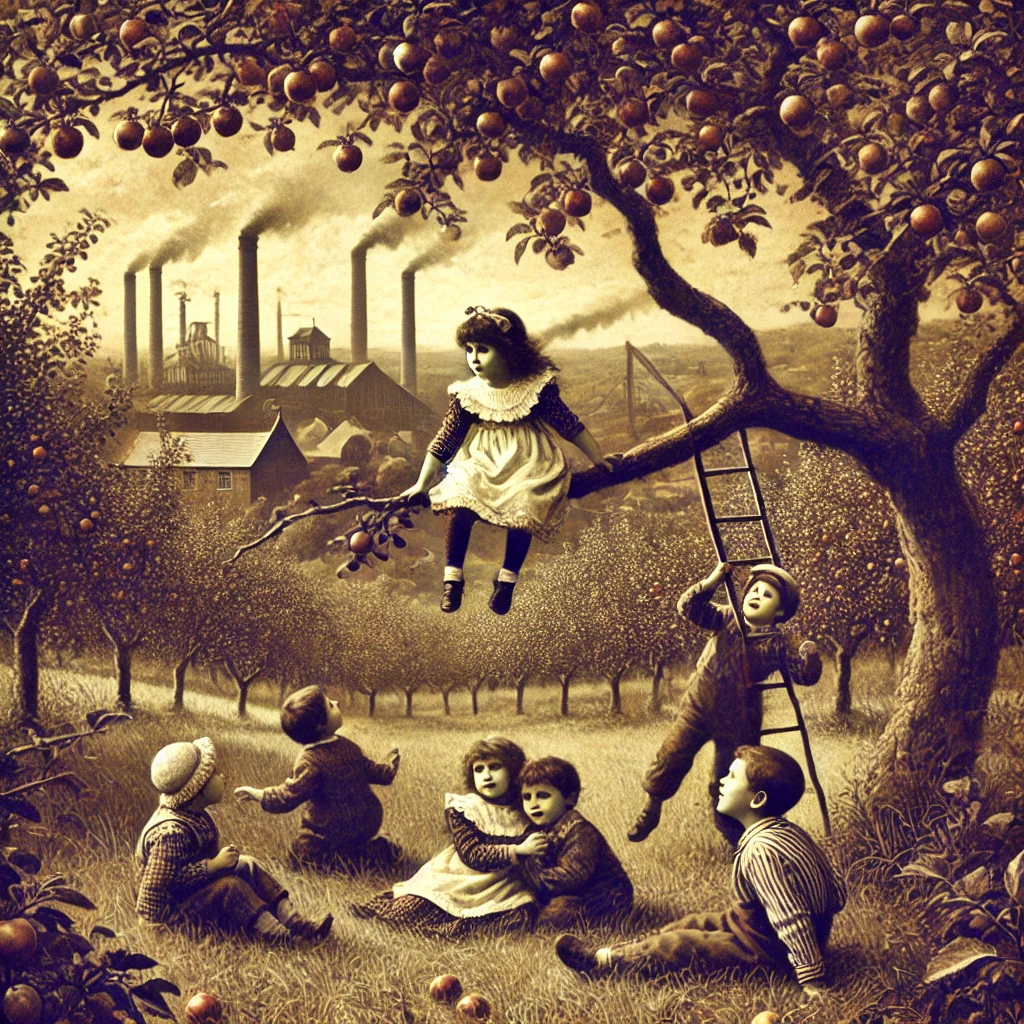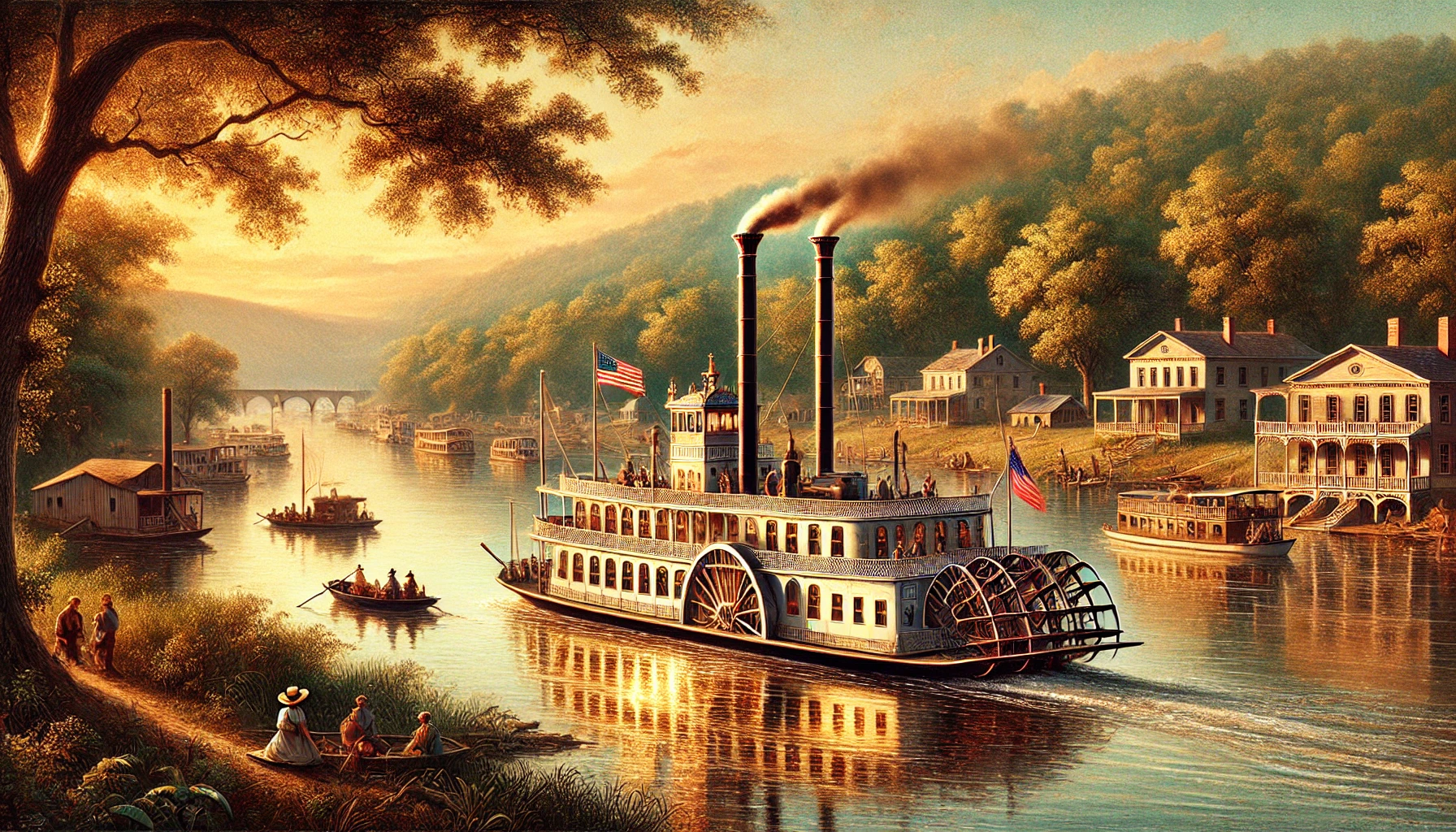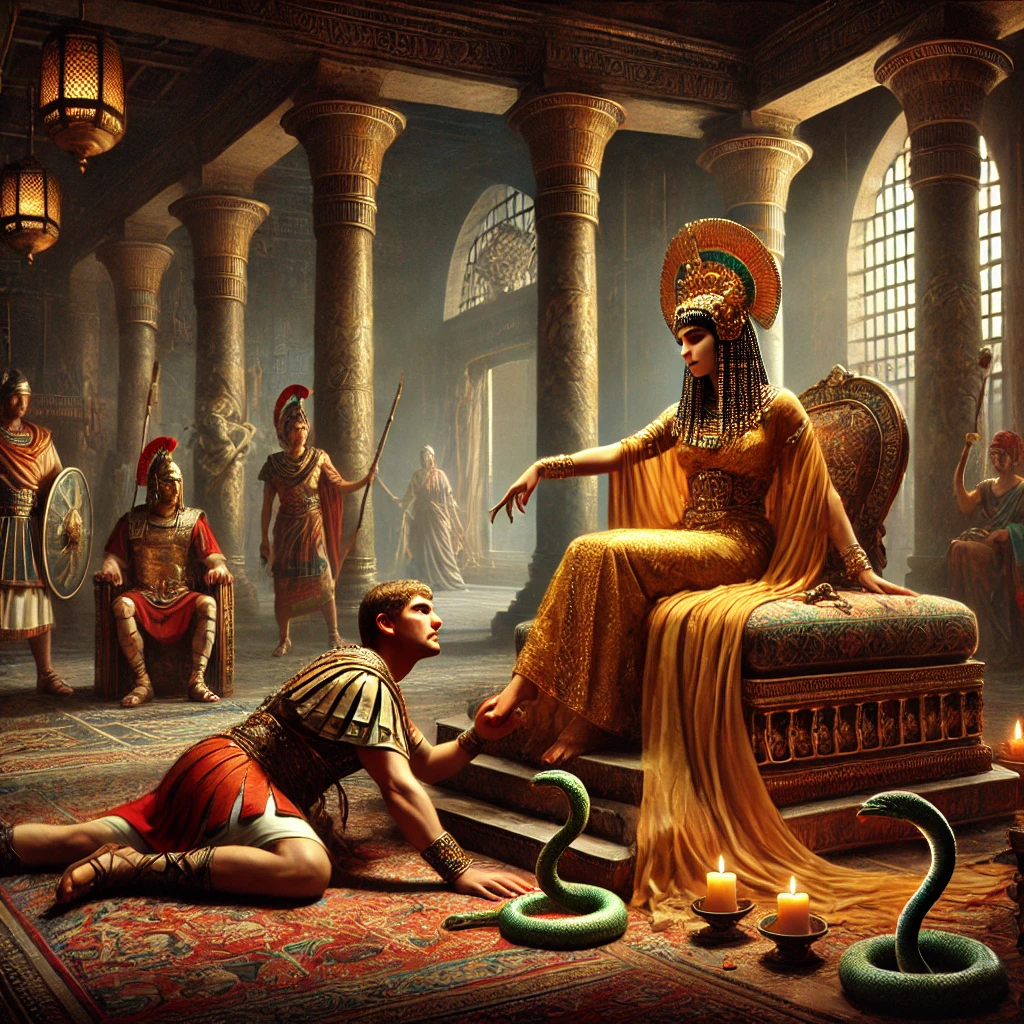The Iron Woman is a 1911 novel by Margaret Deland, an author known for her contributions to the literary realism movement. The novel is set in a fictionalized industrial town and explores the dynamics of family, business, and societal expectations. At the heart of the story is Mrs. Sarah Maitland, the titular “Iron Woman,” who runs a steel mill with the same unyielding discipline that governs her relationships with her children, Blair and Nannie.
Plot Summary
Blair Maitland stood at the edge of the dark industrial world that shaped his life, watching as his mother, Sarah Maitland, commanded the steel mill with the same relentless authority she had over him. The mill was her life, its furnaces roaring like her own unyielding determination, while Blair could not help but feel suffocated by the ugliness and harshness of it all. He longed for beauty, for freedom, for something beyond the grinding machinery of his mother’s empire. But Sarah, the “Iron Woman,” would not bend—not for the delicate nature of her sensitive son, nor for the whisper of flowers on the table, something Blair often wished for during their cold and formal meals.
Sarah had built her life on hard work, having inherited and expanded the family’s steel business after her husband’s death. She embodied strength, self-discipline, and an almost ruthless dedication to her work. There was little space in her heart for softness, for Blair’s artistic soul, or even for Nannie, Blair’s half-sister, who dutifully accepted her role as the quiet, obedient daughter. While Sarah loved her children, it was a love mixed with duty and expectation, an emotion that rarely surfaced in words or gentle gestures. It was in the mill where Sarah felt most at home, where her hands could command the flow of molten iron and her mind could calculate profit and production with precision. The house, with its neglected beauty and its son pleading for a different life, was a place where she never felt entirely comfortable.
Blair, though still a boy, was already dreaming of escape, of a future where he would be surrounded by the things he loved: art, music, and beauty. He felt out of place in the world of his mother’s making, a world of soot and steel that weighed on him with invisible chains. Nannie, on the other hand, lived in quiet submission. She adored Blair and often shielded him from Sarah’s sternness, but she was too fearful to openly defy her mother. It was Robert Ferguson, Sarah’s business partner and longtime friend, who observed the growing tension between mother and son. Cynical, yet kind in his own gruff way, Robert was a regular presence in the Maitland household, though even he could not bridge the emotional chasm widening between Sarah and Blair.
One day, when Blair was still young, he and Nannie, along with their friends Elizabeth Ferguson, Robert’s lively and audacious niece, and David Richie, a boy adopted by Mrs. Richie, concocted a wild plan to run away and get married. It was, of course, the fantasy of children, fueled by Elizabeth’s fiery imagination and Blair’s deep yearning for escape. They gathered what little they could—a few stolen bills from Sarah’s cash box, hasty provisions, and hearts full of excitement—and embarked on their brief adventure. But the runaway children didn’t get far before they were discovered and brought back to the iron grip of their homes. Blair’s escape attempt, though childish, reflected the deeper unrest stirring within him. He could not live under his mother’s shadow forever.
As the years passed, the children grew into their destined roles. Blair, as sensitive as ever, found his path in the pursuit of art and beauty, far removed from the world of steel that Sarah had envisioned for him. Nannie remained the dutiful daughter, though her quiet compliance came at the cost of her own dreams. She struggled between her loyalty to her mother and her deep affection for Blair, whose increasingly rebellious nature worried her. Sarah, for her part, continued to run the steel mill with the same fierce precision. Her life was defined by work, and as her business grew, so too did the emotional distance between her and her children.
Blair’s discontent reached a peak when he made the bold decision to marry Mrs. Richie, the adoptive mother of his childhood friend David. The marriage was an attempt to claim a life of his own, one that would allow him to escape the suffocating control of his mother. Mrs. Richie, gentle and kind, offered the sort of tenderness and beauty that Blair had always longed for. But even in this union, Blair could not escape the weight of his past. His marriage was built on a fragile foundation, haunted by his unresolved relationship with Sarah and his deep, ingrained sense of inadequacy.
For Sarah, Blair’s marriage was a betrayal. She could not understand his need for something beyond the iron world she had built for him. To her, the steel mill was not just a business—it was security, legacy, and the very essence of life itself. Blair’s rejection of this world felt personal, as if he had turned his back on everything she had worked for, everything she had sacrificed. Their relationship fractured further, each hurtful word and each unspoken disappointment deepening the divide.
As Blair struggled to find happiness in his marriage, Sarah continued her life at the mill, her heart growing harder with each passing year. Yet there were moments, brief and fleeting, where her iron will faltered, and a glimpse of the woman beneath emerged. She cared for Blair in her own way, but it was a love bound by duty rather than affection, and by the time she realized how much her son had needed her, the damage had already been done.
The tension between Blair and Sarah finally reached its breaking point when Blair, worn down by years of emotional neglect, made a desperate choice. He abandoned his marriage, unable to reconcile his need for beauty and love with the harsh realities of life under Sarah’s shadow. His decision left a trail of broken hearts—Mrs. Richie’s, Nannie’s, and even, in her own silent way, Sarah’s.
In the end, Blair’s departure left Sarah alone with her steel mill, the empire she had built with her own hands. She had succeeded in every way the world measured success—her mill thrived, her workers respected her, and her fortune grew. But at what cost? As the years wore on, Sarah was left to grapple with the emptiness of her victory. She had built an empire of iron, but in doing so, had lost the warmth of her son’s love, the closeness of her family, and the chance for a more meaningful connection.
Though the mill’s furnaces continued to roar, Sarah’s heart, once molten with ambition and drive, had cooled into something unyielding and brittle, much like the iron she had forged.
Main Characters
Sarah Maitland (The Iron Woman): She is a determined, no-nonsense steel mill owner. Sarah is a widow, whose identity and values are deeply tied to her work ethic and control over the business. She struggles to balance her business success with her personal relationships, especially with her children.
Blair Maitland: Sarah’s sensitive son, who is frequently at odds with his mother. He craves beauty and personal connection, but feels smothered by the cold, utilitarian world his mother embodies. Blair’s need for affection and his rebellion against the industrial lifestyle drive many of the emotional conflicts in the novel.
Nannie Maitland: Blair’s half-sister, who is torn between her loyalty to her brother and her duty to her mother. Nannie is mild-mannered and compliant, serving as a foil to Blair’s more defiant nature. Her role in the family tension is often that of a peacekeeper, though she suffers under the weight of expectations placed on her.
Robert Ferguson: A family friend and Sarah’s trusted business partner, he is a melancholic figure who often expresses cynicism about life. His relationship with Sarah is complex, as he admires her strength but also resents her unrelenting nature.
Elizabeth Ferguson: Robert’s niece, who is bold and energetic. She contrasts with Blair’s passive sensitivity, bringing a different dynamic to the story. Elizabeth’s spirited personality often brings tension but also reveals a different way of confronting life’s challenges.
Theme
Maternal Conflict: One of the central themes of The Iron Woman is the clash between maternal duty and personal ambition. Sarah Maitland’s role as a businesswoman complicates her relationship with her children, particularly Blair, who feels emotionally neglected by her. The novel explores the consequences of prioritizing work over nurturing relationships.
Industrialism vs. Beauty: Blair’s disdain for the “ugliness” of the steel mill and his yearning for a more aesthetic life highlights the conflict between industrial progress and the human desire for beauty and emotional fulfillment. This theme is evident in the way Blair seeks comfort in art and nature, which contrasts sharply with his mother’s obsession with work and productivity.
Class and Social Status: The novel delves into the social fabric of the town, reflecting on the divide between the working class and the industrial elite. Sarah’s success in business brings wealth and power, but the novel questions the personal cost of such achievements, particularly through the character of Blair, who is disconnected from the values that drive the industry.
Duty and Sacrifice: Many characters in The Iron Woman are burdened by a sense of duty, whether to family, work, or societal expectations. Sarah sacrifices her emotional connection with her children for the success of her business, while Nannie sacrifices her desires to maintain family harmony.
Writing Style and Tone
Margaret Deland’s writing in The Iron Woman is grounded in the realism of the time, marked by detailed descriptions of both the industrial setting and the emotional inner lives of the characters. Her prose is methodical, reflecting the iron will of her protagonist, Sarah Maitland, and the rigid structure of the industrial world she inhabits. The tone often conveys a sense of melancholy and tension, especially in scenes where Blair’s sensitivity is pitted against his mother’s ironclad discipline. Deland’s use of dialogue is another powerful tool, as it brings out the emotional complexities of family dynamics, often through subtle shifts in tone.
Deland also employs symbolism throughout the novel, particularly with the contrast between iron (representing industry, strength, and rigidity) and more delicate imagery like flowers or art, which embody the softness and beauty Blair yearns for. This duality mirrors the central conflict in the novel between industrial success and personal fulfillment.
We hope this summary has sparked your interest and would appreciate you following Celsius 233 on social media:
There’s a treasure trove of other fascinating book summaries waiting for you. Check out our collection of stories that inspire, thrill, and provoke thought, just like this one by checking out the Book Shelf or the Library
Remember, while our summaries capture the essence, they can never replace the full experience of reading the book. If this summary intrigued you, consider diving into the complete story – buy the book and immerse yourself in the author’s original work.
If you want to request a book summary, click here.
When Saurabh is not working/watching football/reading books/traveling, you can reach him via Twitter/X, LinkedIn, or Threads
Restart reading!








